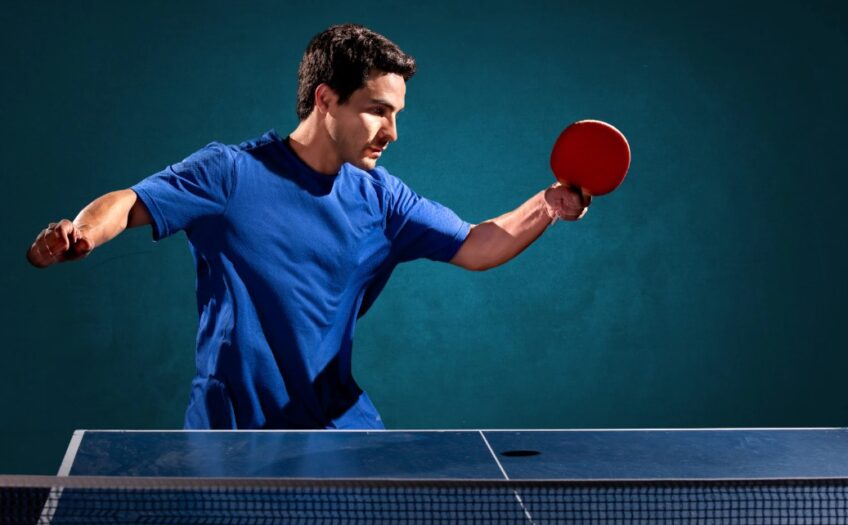Table tennis, also known as ping pong, is a fast-paced and exciting sport that requires agility, speed, and precision. It’s a game of strategy, where players must anticipate their opponents’ moves while trying to outmaneuver them with their own. One essential element that can make or break your table tennis game is your grip. Your grip influences your ball control, your spin, and your overall comfort while playing.
In this article, we’ll delve into the different types of table tennis grips and discuss their pros and cons. Whether you’re a beginner or an experienced player, understanding the various grips can help you find the one that suits your playing style and helps you take your game to the next level.
1. The Shakehand Grip
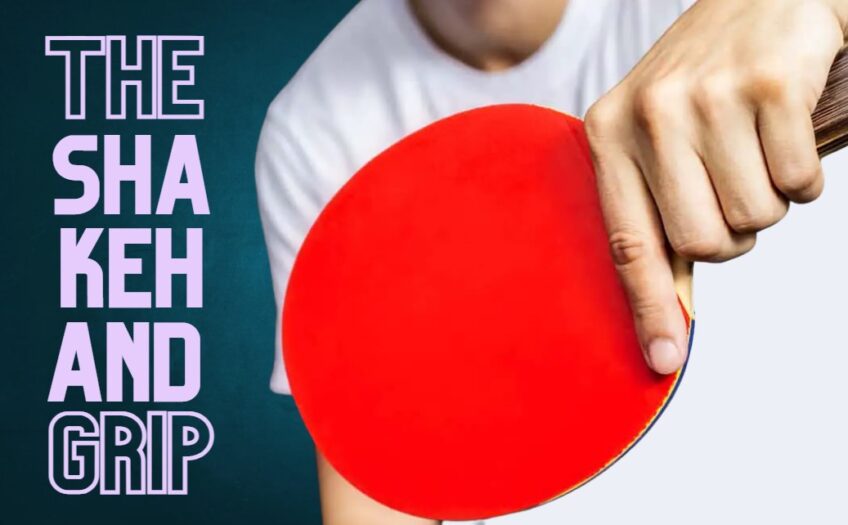
The shakehand grip is the most popular and widely used grip in table tennis. It’s named this way because it resembles a handshake, with the paddle held like a handshake grip. The thumb and forefinger wrap around the handle, while the other three fingers rest on the blade’s backhand side.
Advantages
It offers a lot of versatility and control, making it an excellent choice for players who prefer an all-around playing style. It allows for easy switching between forehand and backhand strokes, as well as quick adjustment of the paddle’s angle for different types of spin. The grip’s natural position allows for a good range of wrist movement, which is crucial for generating power and spin.
Disadvantages
While the shakehand grip offers excellent control and versatility, it can be less powerful than other types, such as the penhold one. It may also require more wrist strength to execute certain strokes effectively, which can be a disadvantage for players with weaker wrists.
2. The Penhold Grip
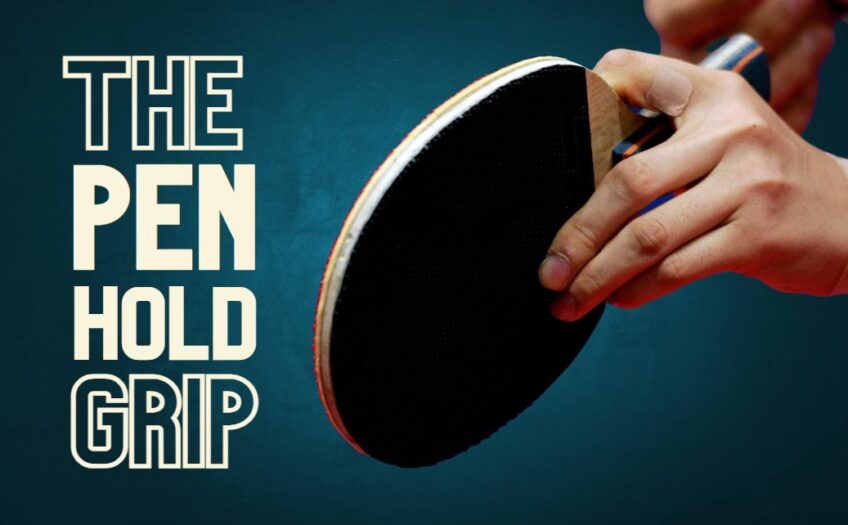
This variation is less common than the shakehand grip but is still widely used, particularly in Asian countries. As the name suggests, it involves holding the paddle like a pen, with the thumb and forefinger gripping the handle and the other three fingers resting on the blade’s backhand side.
Advantages
It offers exceptional power and speed, particularly in the forehand stroke. This is because the wrist can generate more speed and power due to the grip’s natural position. The grip also offers good control over the ball and allows for a quick transition between forehand and backhand strokes.
Disadvantages
The penhold variation can be challenging to learn, especially for beginners. It requires a high degree of wrist strength and flexibility, which can take time to develop. It also offers less versatility than the shakehand grip, as switching between different types of strokes can be more difficult.
3. The Seemiller Grip
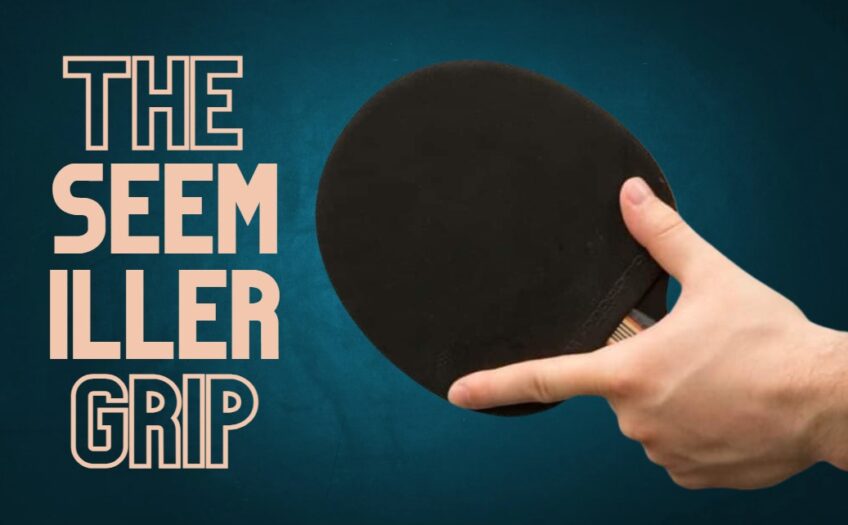
This is a unique type as it combines elements of both the shakehand and penhold grips. It was popularized by five-time US national champion Dan Seemiller and involves holding the paddle like a shakehand grip but with the index and middle fingers extended along the blade’s backhand side.
Advantages
This technique offers a unique combination of power, speed, and control. It allows for quick transition between forehand and backhand strokes and offers good spin control. The extended fingers on the backhand side can also add extra leverage and power to the stroke.
Disadvantages
The problem with this one is that it can be difficult to learn, as it requires a significant adjustment to the traditional shakehand grip. The extended fingers on the backhand side can also make it challenging to execute certain backhand strokes, and the grip may require more wrist strength than the shakehand grip.
4. The V Grip
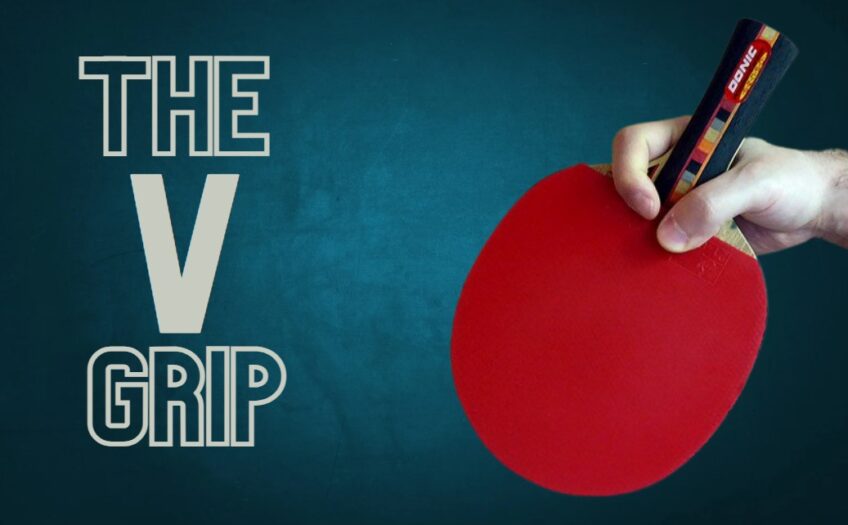
This is a less common grip that involves holding the paddle in a V-shape, with the index finger and thumb creating a V on the handle’s backhand side.
Advantages
The V grip offers exceptional control and spin, particularly in the backhand stroke. The unique hand placement can help players generate more spin, making it an excellent choice for players who rely on the spin to win points. It also allows for easy switching between forehand and backhand strokes.
Disadvantages
This is another challenging grip variation, and it is not widely used. It may also require more wrist strength to execute certain strokes effectively, which can be a disadvantage for players with weaker wrists. Additionally, the V grip offers less power than other grips, especially the penhold one.
5. The Pistol Grip
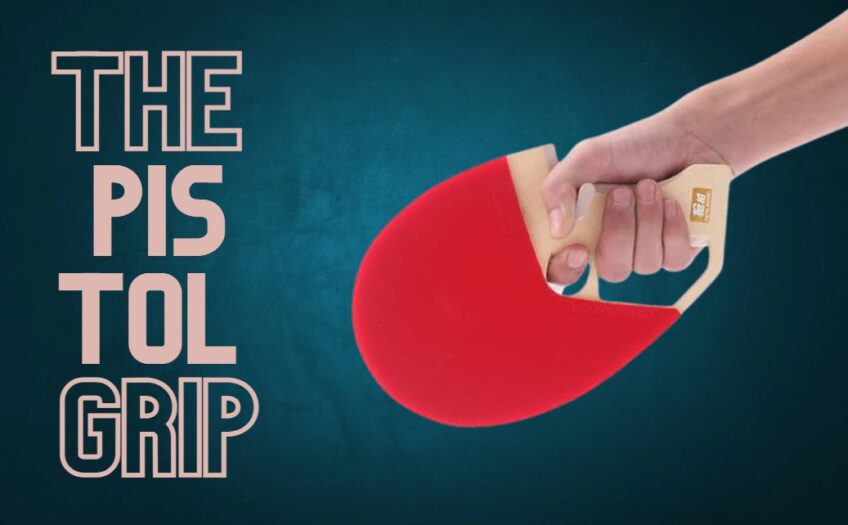
The pistol grip is a less common grip that involves holding the paddle like a gun, with the index finger extended along the handle’s backhand side and the other fingers wrapped around the handle.
Advantages
The pistol grip offers exceptional control and accuracy, particularly in the backhand stroke. The extended index finger on the backhand side can help players generate more spin and control, making it an excellent choice for players who rely on these elements. It also allows for easy switching between forehand and backhand strokes.
Disadvantages
This is a grip that requires a significant adjustment to the traditional shakehand grip. It may also offer less power than other grips, making it less suitable for players who rely on it to win points.
How to Pick the Grip That Will Suit Me Perfectly?
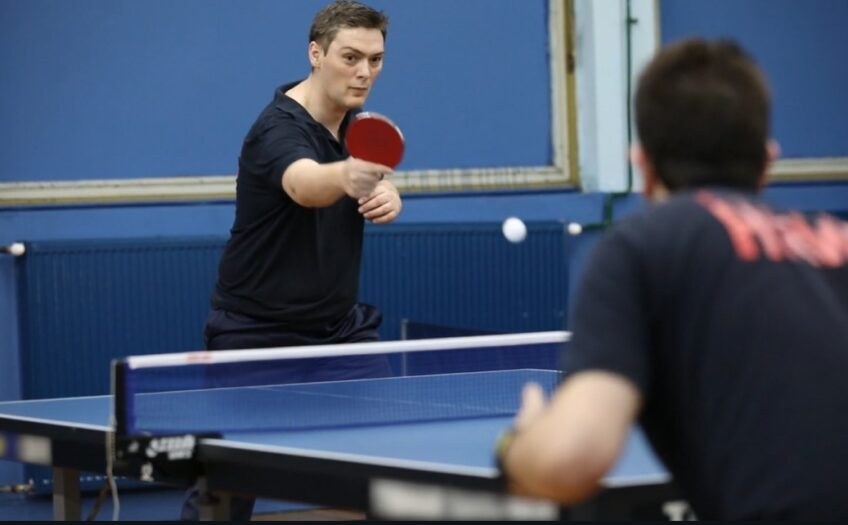
Choosing the proper grip for your playing style is crucial to improving your game. While some players may naturally gravitate towards a particular grip, it’s essential to experiment with different grips to find the one that best suits your style. Here are a few tips to keep in mind:
Consider Your Playing Style
If you rely on power and speed, the penhold or seemiller grip may be a better choice. If you prioritize control and versatility, the shakehand grip may be a better option.
Experiment With Different Grips
Don’t be afraid to try different grips to find the one that works best for you. It may take time to get used to a new type, so be patient and give yourself time to adjust.
Practice Regularly
No matter which grip you choose, practice is essential. Regular practice can help you develop the strength and flexibility needed to execute different strokes effectively.
Frequently Asked Questions

1. What is the best table tennis grip for beginners?
For beginners, the shakehand grip is often the best choice as it is the most common and offers a good balance of control, power, and versatility.
2. Can I switch between grips during a match?
Yes, you can switch during a match, but it may take some time to adjust to the new grip, so make sure to do it a lot during your practice sessions.
3. How do I know which grip is right for me?
The best way to know which grip is right for you is to experiment with different types and see which one feels most comfortable and natural.
4. Is one grip better than the others?
There is no one-size-fits-all answer to this question, as it depends on your playing style and personal preference. Some players may prefer power and speed, while others may prefer versatility and control, so the key is to try out each and every one to figure out which one suits you best.
5. Can I use the same grip for both forehand and backhand strokes?
Yes, most players use the same grip for both forehand and backhand strokes, but some players may use different ones and switch them during the match for greater control or spin.
6. How long does it take to get used to a new grip?
It may take some time to get used to a new type, but with regular practice, most players can adapt within a few weeks or months.
7. Are there any grip techniques that can help me improve my game?
Yes, there are several grip techniques that can help you improve your game, including adjusting your grip pressure, wrist movement, and finger placement. It’s best to work with a coach or watch instructional videos to learn these techniques properly.
Final Words
The type of grip you choose in table tennis can have a significant impact on your game. Understanding the different types and their advantages and disadvantages can help you find the one that best suits your playing style.
Whether you prefer the power and speed of the penhold grip or the versatility and control of the shakehand grip, experimenting with different types and styles while practicing regularly can help you improve your game and take your table tennis skills to the next level.
In case you want to find out more about the rules of table tennis or ping pong, visit our article that explains why people often believe these terms are connected to different sports and clarifies some details about it.

